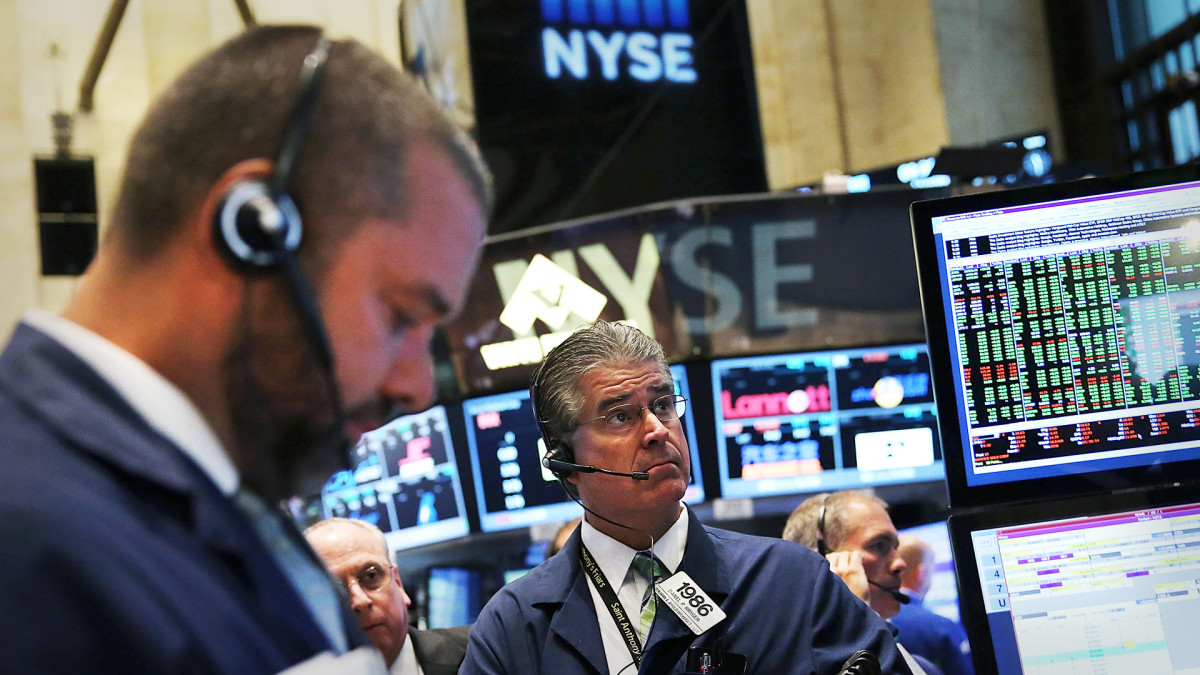
U.S. stocks nudged higher Wednesday, with the Dow looking to reverse its slide into negative territory for the year, as a surge in Treasury bond yields continues to hammer global markets amid renewed inflation concerns.
Stocks slumped to the lowest levels since June 1 last night in an extended sell-off triggered by a much larger-than-expected jump in job openings for the month of August that suggested wage pressures could stoke inflation over the final months of the year.
The report, published by the Bureau of Labor Statistics, showed 9.6 million unfilled jobs recorded over the month, snapping a string of declines that began in March and teeing-up today's ADP National Employment Report and Friday's official September non-farm payroll reading.
A tight labor market, alongside a resilient domestic economy, has rekindled inflation concerns and lifted Treasury bond yields to the highest levels in more than sixteen years.
ADP, however, said private sector hiring slowed to 89,000 last month, well shy of Street forecasts of a 153,000 gain and the lowest overall tally in two years.
Political gridlock in Washington was also adding to market worries and the chances of a prolonged government shutdown re-emerged following the historic ouster of House Speaker Kevin McCarthy late Tuesday.
A hawkish Federal Reserve, which is signaling the need for one more rate hike between now and the end of the year, which would take the Fed Funds rate to between 55% and 5.75%, is adding to the upward pressure on yields and the broader market contagion.
Benchmark 10-year notes slipped to 4.756% in New York trading following the ADP release, with 2-year paper pegged at 5.104%, while 30-year bonds crept towards the 5% mark, at 4.934%, a level that could trigger historic losses for fixed income portfolios and further selling on Wall Street.
"The functioning of the short-term interest rates market and its velocity (speed of rises) is clearly indicating that if we stay in this environment for another week some kind of action is needed,". said Saxo Bank strategist Steen Jakobsen. 'We have reached something breaking and a “punch on the mouth” simultaneously. The central banks have again made a policy mistake and market is handicapping it even before the imminent slow-down in global growth."
Reflecting that concern, the CBOE's key volatility gauge, the VIX index, was marked 13.3% higher in the overnight session to a late May high of 19.95 points. That level suggests investors are betting on swings for the S&P 500 as wide as 65 points, or 1.25%, in any given session.
The index was last seen 3.24% lower in early Wednesday trading at 19.14points.
Heading into the afternoon of the trading day on Wall Street, the S&P 500 was marked 24 points higher, or 0.58%, while the Dow gained 110 points
The Nasdaq was 131 points higher, or around 1%, amid the pullback in Treasury yields with gains blunted a muted performance for Apple (AAPL) -), the benchmark's heaviest weight, following a ratings cut from KeyBanc Capital Markets.
In Europe, the regional benchmark Stoxx 600 was marked 0.33% higher in late Frankfurt trading, while Britain's FTSE 100 slipped 0.47% lower in London.
Overnight in Asia, Japan's Nikkei 225 ended 2.28% lower, hitting a four-month low of 30,526.88 points, while the region-wide MSCI Asia index was marked 1.08% lower into the close of trading.
- Get exclusive access to portfolio managers and their proven investing strategies with Real Money Pro. Get started now.







